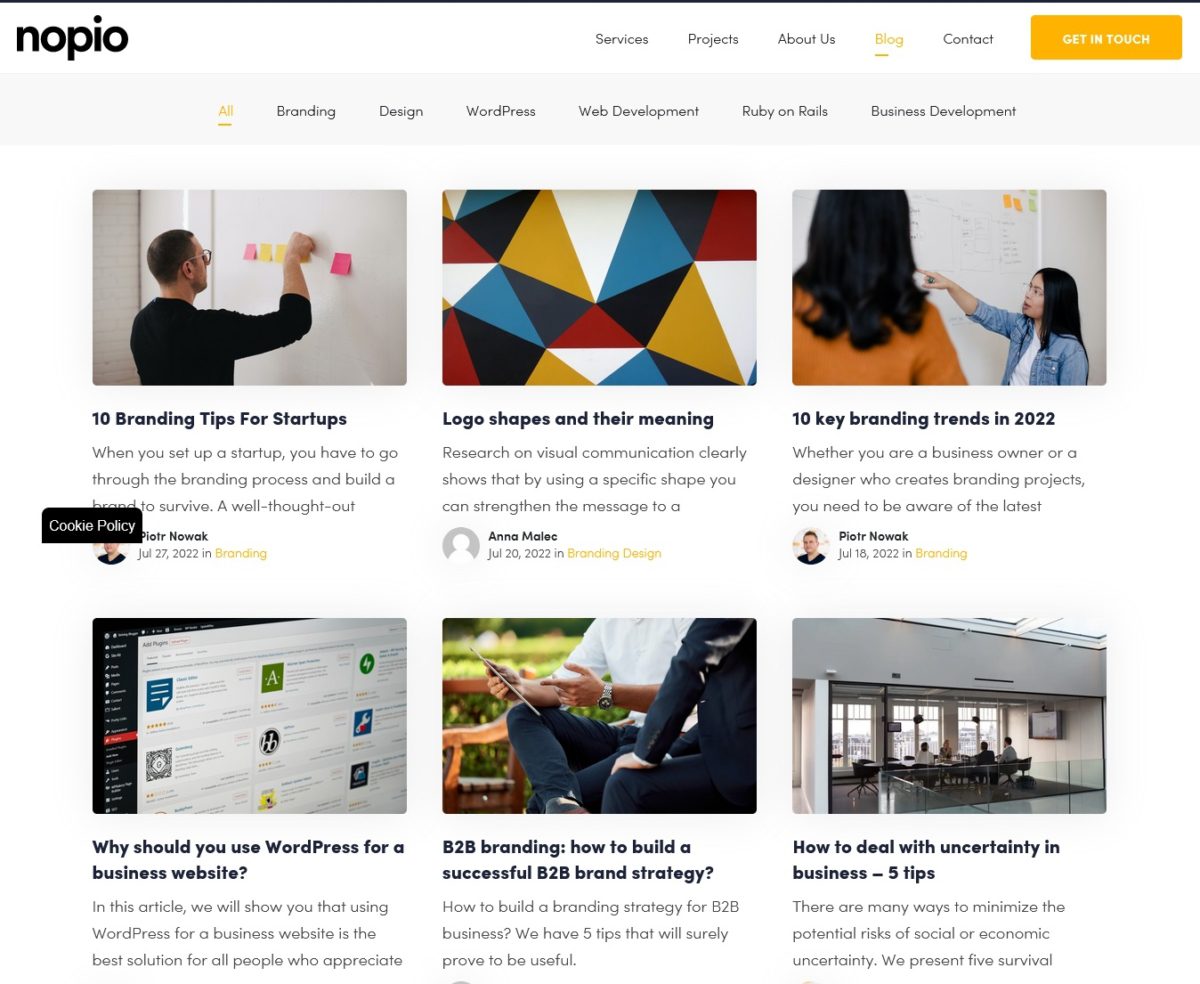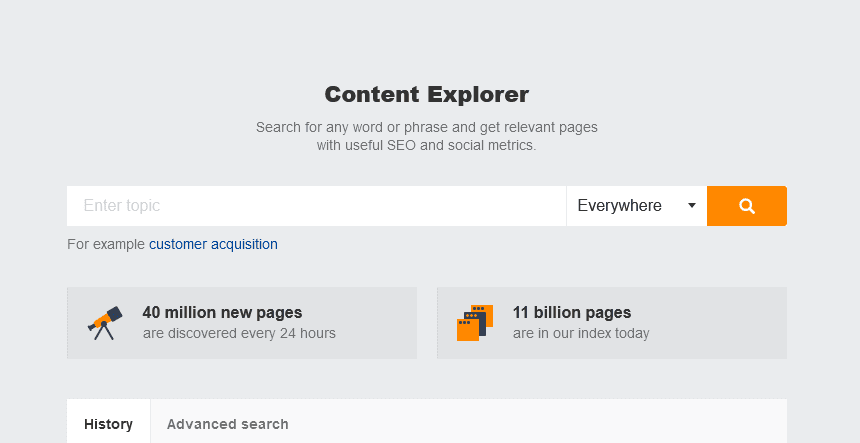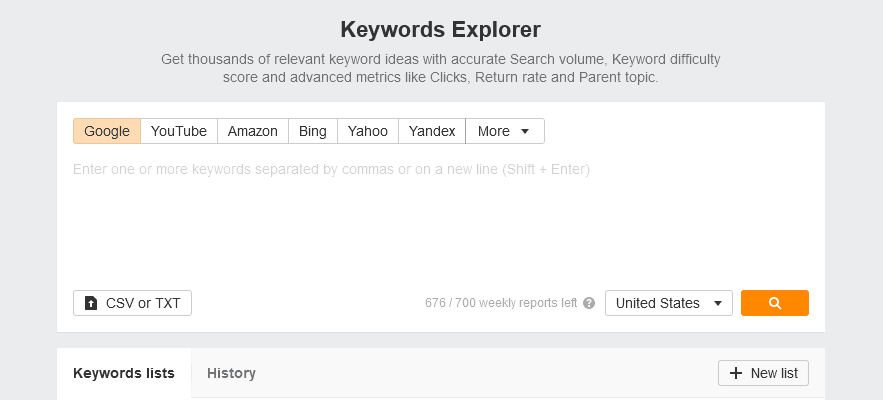Imagine the frustration of entering a store with no clear signage, disorganized shelves, and no staff to guide you. How long would you stay? The same applies to website navigation.
Contrary to some beliefs, website content creation is quite complex and requires careful consideration, as long as you want to make sure that it fulfills its basic role – appeal to the tastes of as many readers as possible and attract potential customers, thus helping you promote your brand, product, or service.
Let us try to divide the entire content creation process into several stages and take a closer look at each of them, as well as answer some basic questions that come with it.
What exactly is website content?
Building your website is often a challenge, especially after taking into account the competition and the growing requirements of recipients and users. Apart from purely aesthetic issues, such as easy and intuitive navigation on a given website, the use of appropriate colors, fonts, good-quality photos, which is already a kind of norm, it is also of great importance to create appropriate content, i.e., compelling content that will be posted on the website.
Content is simply everything that you publish on your website. It can serve various functions: informational, advertising, building a relationship with the client. Good content is the key to success that will help you attract a wide audience and keep it with you for longer. How to create content for a website? What should high quality content look like? Reliable, interesting, expressed in a colorful language, but at the same time simple and understandable for every potential reader. It should also be created in accordance with good SEO practices.
Types of content for websites
Content published on a website can take many forms. It is not necessarily limited to text. In what form can you see it most often?
1. Descriptions of offers
The main task of the offer text is to introduce the potential buyer to the advantages and benefits that come with purchasing the product or service we provide. However, a good description cannot be a typical advertisement. It should convey valuable and compelling information that will pick users’ interest. This way you will be able to reach the widest possible group of prospective customers and increase website traffic and sales.
2. Blog posts
Blog content tend to be much more personal and individual. In order to attract more readers you can post credible stories, how to guides, reveal a secret, or make yourself known from a slightly different perspective. A blog post is a very friendly and accessible form of the written content, which is why it is so popular among many existing customers.

3. Product description
Remember to create unique product descriptions to avoid duplicate content issues. Product descriptions are mainly informative. A good product description should accurately present all features and benefits, provide information on why your product is better than goods sold by your competitors, as well as define the benefits and perks that the customer can take into account when deciding to buy it, or how much they might miss out on if they do not purchase the product. That is why you should make sure to create only high quality content and provide relevant information.
4. Video content
Recently, content in the form of short videos has gained enormous popularity, it can even be safely said that it is becoming more popular than traditional posts. They can be educational or made purely for entertainment. However, it is best to combine both of these functions and create interesting, filled with content and information videos, served in a light and accessible form. You can use them to talk about your company goals, show and describe the products or test them in practice.
There is a high probability that many people who would not go through marketing texts due to lack of time or willingness to read will click on such a video, since watching it does not require much concentration, especially when presented in a straightforward and user-friendly form.
To create such content, you need someone in your team who is familiar with video content creation tools.
5. Graphics and infographics
Texts without any images can tire and bore their readers. Visual content such as graphics, infographics and various types of photos woven into posts or product descriptions are an interesting diversion, which attract attention and highlight the most important issues when used correctly – e.g. easy to read charts that present important data and statistics. This type of digital content creation usually requires a graphic designer in a content team.
6. Case studies
This concept covers the presentation of a specific issue and how it was resolved. People prefer specific stories and events over dry facts and general information. A description of a product or service based on an already completed project, undertaken cooperation presented in the form of a detailed analysis, photo gallery, maybe even reviews and recommendations of satisfied users, may turn out to be the best approach to further develop your business.

7. Other kinds of content
Of course, there is more! There are a lot of different forms, thanks to which you can show your content in an interesting and original way and bring your offer closer to potential recipients: Q&A, live chats, data analysis, contests, audio recordings and podcasts, FAQs and many other creative solutions. In today’s world, content is no longer limited only to the written word. Creating your company website content can be more than work – it can be fun!
When choosing a content format, consider for what stage of the buyer’s journey is this content created – awareness, consideration or decision?
How to create a website content strategy?
Website content creation process is a complex and multi-stage task. You should not publish posts about things that have no correlation to each other or lack any reference point to your business. A lot of effort and time should be put into devising an effective website content strategy. What are the essential requirements for creating successful content?
The point is to convey what makes the products/services we offer the best in an effective, original and understandable way. This will grab users’ attention, attract website traffic and generate conversions. Let’s be honest, we want our brand to be popular and profitable.
The entire process of creating a website content strategy can be divided into several stages:
1. Set your goals before you create content
A good starting point is to determine what our most important goal is. What do you want to achieve with your business? Your website can serve many different purposes. Would you like it to attract more organic traffic? Should it generate more leads? When would you like to achieve your goals? Planning website content should always go hand in hand with your goals and expectations.
2. Create a buyer persona
What is a buyer persona? It is just your potential recipient, your ideal customer. Imagine what they look like. How old are they? What is their gender? What education do they have? What is their profession and what are they interested in? You can even give that persona a name, assign relationship status, or decide whether they have children or not. This way, you will be able to identify the needs and expectations of your target audience and respond to them accordingly. There are even special tools to create a persona available online!
3. Come up with content ideas
In order to create high-quality content you should brainstorm ideas, look for inspiration and follow the current trends in your industry. Check what works best, what makes the leaders in a given industry stand out. It is worth drawing on the experience of others, reading Internet forums, checking social media, various portals, and analyzing keywords. There are even special generators of ideas for content, however, you should use such tools with caution and apply your own changes to the obtained proposals.
4. Create a website content plan
The process of website content creation should be thoroughly thought over, planned and written out. There is a lot of work to do before you start creating content. You should not post random texts that do not do much, but only take up space or even “clutter” your website.
How to plan website content? The more time you spend in the planning phase, the more engaging and better quality your content will be. When preparing a content plan, it is worth taking into account such elements as topics, content type (choosing between creating written or visual content), keywords, text length, internal linking, and even who will be responsible for delivering the content and what promotion channels you can use.
5. Content calendar – regular publishing schedule
This is a really important and cost-effective step to plan how, where, in what order and, above all, when your content should be posted on your website. The content calendar allows for content planning well in advance and helps you avoid delays. You need to create an editorial calendar and stick to it later.

6. Content publication
Content should always be published on time and checked several times before being approved. You should also implement a website content update process, i.e., a schedule for updating older entries that require refreshing for various reasons.
7. Develop a content promotion strategy
Without effective promotion and advertising, even the best, most colorful and filled with professional knowledge text will not reach a wide audience because no one will know about its existence. The easiest way to gain more publicity is through skillful management of social media accounts. It might also be a good idea to establish cooperation with YouTubers and influencers.
8. Conduct a content audit
It is important to conduct audits of content performance regularly – preparing analyzes, careful observation of statistics, traffic, user involvement, number of clicks on given links, and so on. Once you have completed an audit and found areas for improvement, you can make all sorts of changes and see what effect they have on the end results. Look for signs of improvement after, for example, modifying or updating titles, headings, and fragments of texts.
Website content creation process – practical tips
Effective website content should attract the reader’s attention within the first few seconds after they enter a given website. Use the content marketing tips described below to get better results from your content creation efforts.
How to write content for a website? You can do it yourself or use the services of a professional content creator. The website content creation process itself is both extremely interesting and challenging at the same time.
Take a look at the best practices for writing web content:
1. How to generate content ideas?
One of the best ways to find out what might be of interest to your audience is to use the tools to generate content ideas. One of our favorite tools is Surfer SEO Content Planner, which suggests dozens or even hundreds of topics related to a given keyword. Another interesting tool is Ahrefs Content Explorer that allows you to generate content ideas for any industry.

Buzzsumo is also a solution worth paying attention to. It is a tool that will show you the content most often shared on social media networks (Facebook, LinkedIn, Twitter, Pinterest), thanks to which you can quickly and easily identify the most popular topics related to the keyword you choose.
It is also worth looking for ideas on topics on Internet forums and Facebook groups related to a given industry. It might be a good idea to meet the expectations of readers, by publishing open questions or surveys on your social media profiles – the customer feedback can be turned into a great source of inspiration.
And of course, no one will forbid you to check what your competitors are up to from time to time. It is okay to rely on the experience of others. This will allow you to avoid frequently repeated mistakes and get interesting ideas for your own business. A good website content strategy will always pay for itself.
2. How to do keyword research for your content?
The basics of SEO definitely cannot be foreign to a person who wants to run their website or an online store efficiently. SEO is an acronym that stands for Search Engine Optimization. Even a very good text, full of valuable content, will not be successful if it simply does not reach the user. Thanks to SEO, you increase the chances of reaching your target audience, i.e., people interested in a given topic or in purchasing a specific product. One of the most important elements of SEO is searching for and then including relevant keywords in the content.
Before you start writing, you should do thorough research, check what the needs of your target group are, what is currently fashionable, what is “selling well” and attracting specific audience in your industry.
You can proceed to the selection of target keywords once you have the initial list of ideas for topics. Keyword research consists of analyzing keywords, i.e., queries that users type into the search engines. You can use tools such as Ahrefs Keywords Explorer or a free tool AnswerThePublic for this purpose.

Perfect keywords are those that often are typed by users (have high search volumes), but rarely used by other companies from your industry (low difficulty). If your website does not have high authority yet, using too competitive search term would not give good results and your website would very quickly drown in a sea of thousands of similar pages. As you can already guess, keyword research and selection is not as easy as it may seem.
3. How to write SEO friendly content?
Content that requires optimization for the search engines includes, among others, texts for the website, descriptions of online stores and offered products, articles, guides, blogs. Their main goal is to increase website traffic, brand promotion, acquire a new customer base and increase sales. So how do you create a text compliant with SEO principles? It is worth sticking to a few basic rules here.
The text should be reader-friendly and SEO optimized. You need to incorporate keywords into content in a way that does not make them look out of place. Remember not to use too many keywords, as such texts look unnatural and are difficult to read.
On-page SEO content optimization process also includes proper use of headers, text formatting, adding image alt attributes, linking to related content, as well as optimizing title and meta description.
4. How to write readable content for a website?
In the era of fast living, people tend to read just fragments of longer texts. This is what we call selective reading, or in other words, the so-called scanning. The users jump from one paragraph to the next, trying to quickly find the most crucial and interesting information. Hardly anyone on the Internet reads texts from start to finish. Therefore, if we want to pay special attention to a fragment of the text, it is worth bolding it, underlining it or throwing it into a frame.
It is also worth paying special attention to thoughtful, eye-catching headlines and subheadings. Remember that they are the first to attract the reader’s attention, encouraging or, on the contrary, discouraging them from reading the entire entry. Use numbers and bullet points in order to improve the readability of your texts.

5. How to create better content for your target audience?
Remember that your content will never reach every user. And that is a good thing! You should always aim your content at your target audience. It is better to address the needs of a narrow, specific group of recipients potentially interested in your services or products and adjust the way you convey your message to their style.
Keep in mind who you are writing for, why you are writing and what results you would like to achieve with your content. Your content should answer your target audience’s questions, educate them, and show how your product or service can solve their pain points.
Also remember about the appropriate length of the texts you want to publish – keep them short but not at all cost. Long entries can seem boring and most people will not choose to spend their time on reading them in their entirety. On the other hand, a very short, superficial text may be too vague and, as a result, not very well received.

6. Does website design and text appearance matter?
Definitely! Do not forget that the way things look is very important, and reading texts on screens is not as pleasant and friendly to our eyes as printed texts. Therefore, no one will tire their eyes on content with too small or illegible font and text that was not formatted properly – without headings and paragraphs.
Coming back to the font, it is best to choose one from the sans-serif family, i.e., those without embellishments, with a size of about 16 pixels. Although it seems like a lot, the content in this form is clear and does not tire the eyes as much. Remember that the website is not a simple text document and is governed by slightly different rules.
What is interesting, is the fact that the intervals between the individual parts of the text are also important. It may seem like a waste of space, but our eyes need such empty, white space to regenerate for a fraction of a second. This way, the text itself becomes clearer and more understandable.
Let’s not forget about the appropriate color of the text in relation to the background. Failure to properly match these two parameters can have very negative consequences.
The text must be visible. It is not recommended to use sharp, strong and glaring colors or unusual color combinations – yes, it probably looks interesting and original, but it makes the reception of the content difficult, and it is the content that should be the most important and come to the fore.
7. How to develop a customer-centric content strategy?
Identifying the needs of a potential customer will help you match the content so that it is attractive to them and meets their expectations in the best possible way. What we mean by that, is that the customer might want to purchase a given item or service for two reasons. They have never had anything like it, or they want to change the one they have been using so far.
In the first case, the most valuable information for the customer will be the one explaining how the thing they want to buy works, what they can gain from having it and how it will facilitate their everyday activities. A more experienced client in a given topic already knows all of this, so they will rather focus on the details that distinguish your offer from the competition. Avoid common copywriting phrases that can be found on almost every website. Try to show your products or services from a slightly more original side.
8. Catchy headlines and other ways to gain customer attention
There are a few tricks you can use in order to increase the chance of earning a reader’s interest in your posts or products – using catchy headlines is one of them. Texts starting with “5 ways of…” or “10 reasons to…” are very popular among readers. Users also like all kinds of promises and secrets, ready-made answers and innovative, little-known ways of solving various problems. They might even want to read about well-known facts if you present them in an interesting and unusual form.
It is worth putting pictures, photos, graphics, and even short videos between the text paragraphs. Thanks to this, the text itself will not be dry and potential customers will actually enjoy going through it.
Try to write directly to the client, avoid the passive voice and impersonal phrases. It is better to write in a simple language that is easy to understand, rather than to forcefully show off your sophisticated vocabulary or industry-specific phrases and professional terms, which can discourage prospective customers.
It may also be useful to place links that will take you directly to the subpage with a similar blog article that complements the given topic and fits the context.
9. How to facilitate publications and website content management?
We have finally arrived at the last stage: publication. A good CMS plays an important role here. But what exactly is a CMS? This abbreviation stands for Content Management System. Simply put, it is a special software that greatly facilitates and speeds up all website content management processes – its creation, editing and updating even without knowledge of programming languages and HTML code.
Remember that a well-made, intuitive website is half the battle, and the other half includes good content, services, and products. That is why it is worth using the services of companies that support the creation, construction, and maintenance of websites. One of them is Nopio, which offers custom WordPress development. Remember that a well-made website, in terms of graphics, technology, and a good CMS, is the basis for fast, efficient and trouble-free content upload and management.
Measure and analyze your website content performance
Running a website is a continuous and dynamic process. It definitely does not pay off to rest on your laurels and stop updating it. Regular content audit and performance assessment with a few key metrics is therefore the best way to find weaknesses, correct errors and introduce effective optimization of existing content.
It is worth subjecting the published content to systematic and thorough checks, following the Google Analytics statistics and analyzing their most important parameters.

SEO content audits help to evaluate and verify pieces of content in terms of effectiveness in search results, identify new opportunities and ways to increase organic traffic to the existing website.
It is best to create a spreadsheet in Google Docs with listed all the content you have, then specify what can be kept, what needs to be refreshed, and what needs to be deleted or redirected. This will give you a clear picture of what needs to be done next.
Website content creation – summary
We hope our guide to creating content for a website has helped you better understand the challenges and opportunities that come with it. Planning and preparing content for your website is as important as the visual and technical side of it.
After reading the article, you probably already have a few ideas on where to start your own content marketing strategy. Content creation is a very wide topic, so we encourage you to continue your search and development in that area, especially since it is a rapidly changing field, in which new approaches appear constantly, whether in terms of optimization or ways to make the content reach prospective customers better. Let our website content tips fuel your desire for further research, so that the very process of creating content for your website can bring you a lot of satisfaction.






